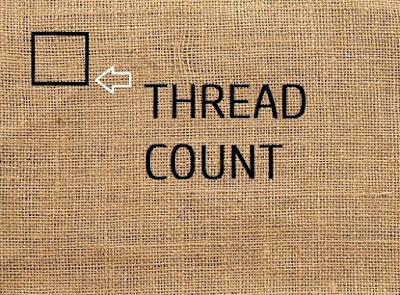Fabric thread/inch:
👉For woven fabric:
◘ Picks per inch:
The number of weft thread per inch is called picks per inch.
◘ Ends per inch:
👉For knitted fabric:
◘ Courses per cm:
Course is a row of loops across the width of the knitted fabric and is measured in courses/centimetre.
◘ Wales per cm:
Wale is a column of loops along the length of the knitted fabric and is measured in wales/centimetre.- Counting glass/Pick glass- Most widely used method. Can be used to count courses/inch and wales/inch.
- Traversing thread counter- Like pick glass but improved instrument where the counting pin is moved by means of a handle. Can be used to count courses/inch and wales/inch.
- Fabric dissection method: Most authentic and reliable method and used to count threads of fabric which are too difficult to measure by other methods.
- Taper grating and line grating: Used in cases where-
- the test results are required in a very short period of time,
- where a large number fabric samples are required to test in a very short period of time.
- Where the exact test result is unimportant rather a good approximation is required.
- Normally fashion designers use this type of instruments.
i. The direction of selvedge is warp direction.
ii. In most cases EPI/EPCm is more than PPI/PPCm
iii. Normally count of warp is finer than weft
iv. Generally warp yarn is more twisted yarn than weft yarns.
v. If any yarn contains any size particle then the sized yarn is warp yarn.
vi. Normally stripe effect (both woven and printed) is done in the warp direction.
vii. Warp yarns are relatively hairy yarn.
viii. Warp crimp is expected to be less than weft crimp due to high warp tension on the loom.
Fibre content:
Quantitative analysis of different fibres in common blend:
Let's assume a fabric contains the blend of 2 fibres: i. A and ii. BAgain say,
Amount of ‘A’ fibre in the blend=PA
Amount of ‘B’ fibre in the blend=PB
Total weight or initial weight of the fabric=x
weight of fibre ‘B’ (after dissolving ‘A’) =y
PB = (y/x) 100%
PA = [(x-y)/x] 100%
PA = (100-PB)%

